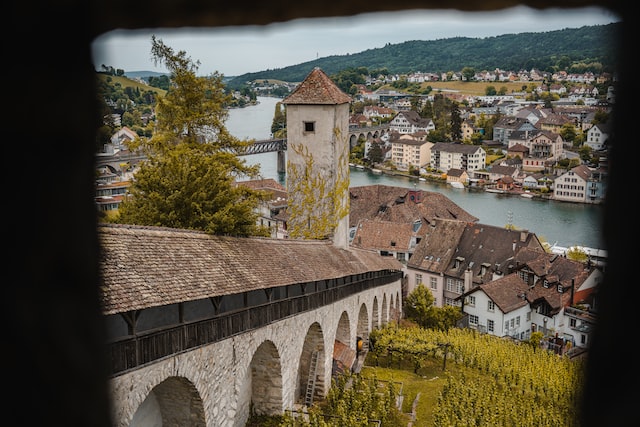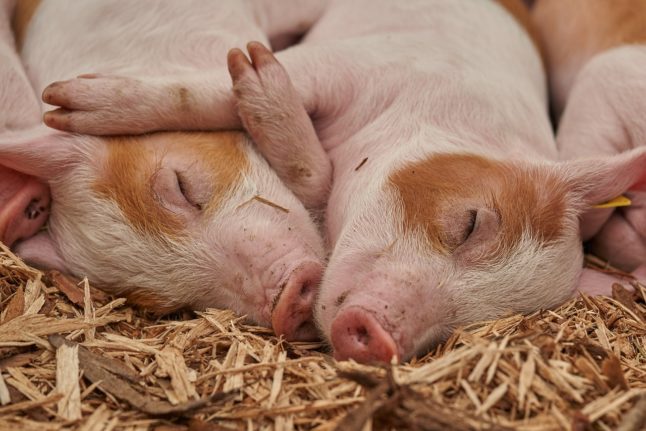Many foreigners choose to settle in Switzerland’s large urban centres where most job opportunities are.
That is why Zurich, Geneva, Basel, and Lausanne all have a high proportion of foreign residents — a number of large multinational companies are located in, or around, these major cities.
READ MORE: Where do Switzerland’s foreigners all live?
However, that doesn’t mean foreigners don’t also settle in smaller towns in Switzerland.
These five small communities (with a total population of less than 40,000 people) are popular among the international community as well.
Nyon (Vaud)
Some 40 percent of the just over 22,000 residents of this quaint township located along the shores of Lake Geneva are foreigners.
Among the perks of living in this historic town is its easy access to Geneva (by train or motorway), as well as stunning views over the rooftops all the way to the Alps from its 500-year fortress.

A view of Nyon. Photo by Armand Khoury on Unsplash
Zug (Zug)
The town of just over 30,000 people counts many foreigners among its residents — nearly 35 percent.
The same is also true of even smaller communities in the canton: in Baar, nearly 25 percent of residents are foreign nationals out of the total population of about 25,000.
In yet another tiny town, Cham, (just over 16,000), foreigners make up about 26 percent of inhabitants.
The attraction of Zug’s municipalities is not only their scenic, almost rural setting, but also many employment opportunities, as well as very low taxes.
READ MORE: Why does the canton of Zug have Switzerland’s lowest taxes?
Schaffhausen (Schaffhausen)
Just over a quarter — 26 percent — of the city’s population of 37,000 people are foreigners.
The main attraction of this city in the very north of Switzerland, which is not normally considered ‘international’, may be lower average rents than in its far more expensive neighbour, Zurich, as well as its proximity to Germany, where common consumer goods are much cheaper.

A view over Schaffhausen. Photo by Anthony Gomez on Unsplash
Vevey (Vaud)
Located toward the eastern end of Lake Geneva, this town of almost 20,000 inhabitants counts quite a few foreigners among its residents: over 42 percent.
The main reason (other than its quaintness) why this town has attracted so many internationals is that Swiss food giant, Nestlé, is headquartered there, so many people not only live in this area, but also work there.
But not all foreigners choose it for this reason: the community’s most famous resident, Charlie Chaplin, moved to Vevey in 1952 and remained there until his death in 1977.
Leysin (Vaud)
This Alpine resort is probably a surprising choice as an international hub.
Nevertheless, well over half (55.4 percent) of its 4,000 residents are foreign.
Great skiing is just part of Leysin’s appeal.
The mountain village is also home to American boarding school attended by about 340 students, which may explain why English is almost the second-language in this French-speaking community.
Have we missed any Swiss communities where a large number of foreigners live? Please let us know and we will add them to the list.



 Please whitelist us to continue reading.
Please whitelist us to continue reading.
Member comments